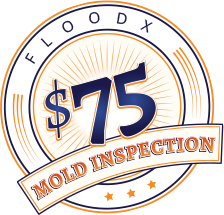
Preparing Before a Flood
Understanding Flood Risks
As a homeowner, it is crucial to understand the flood risks specific to your area. Floods can be caused by heavy rainfall, hurricanes, melting snow, or dam failures. Research your location’s history of flooding and check flood maps provided by local authorities or the Federal Emergency Management Agency (FEMA). These maps outline flood zones and help assess the likelihood of your property being affected.
Once you have identified the flood risks, take proactive measures to mitigate potential damages. Consider installing flood-resistant barriers, such as flood shields or sandbags, around vulnerable areas of your home. Elevating appliances and electrical systems, such as heating units or fuse boxes, can also minimize damage during a flood. Additionally, explore flood insurance options, as standard homeowners’ insurance typically does not cover flood-related damages.
Creating an Emergency Plan
Developing an emergency plan is crucial to ensure the safety of your family and property during a flood. Discuss and establish evacuation routes with your family members, identifying safe locations both within and outside your neighborhood. Designate a meeting point where everyone can gather if separated.
Create an emergency kit that includes essential supplies such as non-perishable food, water, medication, flashlights, batteries, a first aid kit, and important documents. Keep the kit in a readily accessible location and ensure everyone in the household knows where it is.
Additionally, stay informed about emergency alerts and warnings issued by local authorities. Register for emergency notification systems and download relevant mobile apps to receive timely updates. Familiarize yourself with community evacuation plans and shelters, so you know where to go if evacuation becomes necessary.
Securing Important Documents
Before a flood occurs, take steps to secure important documents and valuables. Store copies of essential documents, such as identification papers, insurance policies, and property deeds, in a waterproof and fireproof safe or a secure off-site location. Consider scanning these documents and storing digital copies as well. This ensures that even if physical copies are damaged, you can still access the information.
Create an inventory of valuable possessions, including photographs or videos, to aid in insurance claims and assess post-flood losses accurately. It is also recommended to keep a record of contact information for insurance providers, emergency services, and restoration professionals, as you may need their assistance after the flood.
By understanding flood risks, creating an emergency plan, and securing important documents, you can significantly minimize the impact of a flood on your home and ensure the safety of your loved ones. Taking these proactive measures will provide you with peace of mind and preparedness during challenging times.
Ensuring Safety During a Flood
Evacuation Procedures
During a flood, your safety and the safety of your family should be the top priority. If authorities issue an evacuation order, follow it promptly and evacuate to a designated safe location. Remember that floods can escalate quickly, and it’s important not to underestimate the potential dangers.
When evacuating, take your emergency kit, important documents, and any essential medication. Follow the recommended evacuation routes and avoid driving through flooded areas. Keep in mind that even shallow water can sweep away vehicles, so it’s best to turn around and find an alternate route.
If evacuation is not required but you still have concerns about the safety of your home, consider moving to a higher floor or an area that is less prone to flooding within your property. Avoid basements and ground floors during a flood, as they are more susceptible to water damage.
Monitoring Local Weather Updates
Staying informed about weather conditions and flood updates is crucial during a flood event. Monitor local weather forecasts and pay attention to any flood watches or warnings issued by meteorological agencies or emergency management authorities.
There are several ways to stay updated. Utilize weather apps, radio broadcasts, or emergency alert systems to receive real-time information. Follow official social media accounts and websites of local authorities, as they often provide timely updates and instructions.
It’s important to note that flooding can occur rapidly, and conditions can change quickly. Stay vigilant and be prepared to take immediate action based on the information you receive.
Staying Safe in a Flooded Area
If you find yourself in a flooded area, prioritize your safety and take precautions to avoid harm. Here are some essential guidelines to follow:
- Avoid walking or driving through floodwaters: It is challenging to determine the depth and current of floodwaters, and they may contain hidden hazards or contaminants. Even shallow water can be powerful enough to sweep you away.
- Stay away from electrical equipment: Never touch electrical outlets, appliances, or power lines if you are standing in water or suspect they may be submerged. Contact a qualified professional to handle any electrical issues.
- Beware of wildlife and insects: Floodwaters can displace wildlife, including snakes and insects, increasing the risk of encounters. Be cautious when moving through flooded areas and avoid contact with unknown creatures.
- Use caution with utilities: If floodwaters have entered your home, turn off the electricity, gas, and water supply at the main switch or valve if it is safe to do so. Do not touch any electrical equipment if you are wet or standing in water.
- Seek higher ground: If water levels continue to rise and you cannot evacuate, move to higher ground within your property. Go to the highest floor or roof area if necessary and signal for help if possible.
Remember, personal safety should be your utmost concern during a flood. Following these safety guidelines will help minimize the risks associated with floodwaters and increase your chances of staying safe until help arrives.
Protecting Your Property During a Flood
Safeguarding Valuables
When facing an impending flood, it’s important to take measures to protect your valuable possessions. Start by moving important items to higher ground or upper floors of your home. This includes electronics, sentimental items, important documents (if you haven’t already secured them), and valuable personal belongings.
Consider using waterproof containers or storage bags to further protect items that cannot be easily moved. Place them in elevated areas or on sturdy shelves. If possible, relocate larger furniture pieces to higher levels or secure them to prevent floating or shifting during a flood.
It’s also a good idea to take photographs or create a video inventory of your belongings before a flood occurs. This documentation can be invaluable for insurance claims and will help you remember the items you may need to replace or repair.
Turning Off Utilities
To prevent further damage and reduce the risk of hazards, it’s important to turn off utilities during a flood. Before doing so, ensure your personal safety and follow these guidelines:
- Electricity: Locate your main electrical panel and turn off the power. If water has already entered your home or you are unsure about safety, contact a professional electrician to handle the disconnection.
- Gas: If you smell gas or suspect a gas leak, leave the premises immediately and contact your gas utility company from a safe location. Otherwise, shut off the gas supply by turning the main valve to the “off” position.
- Water: Locate the main water valve and shut it off to prevent additional water from entering your home. This will help minimize the extent of damage and potential flooding.
Taking these precautions will help mitigate the risk of electrical hazards, gas leaks, and water damage to your property during a flood. Remember to consult with professionals if you are uncertain about turning off utilities or if you suspect any issues.
Reinforcing Vulnerable Areas
Identifying and reinforcing vulnerable areas in your home can significantly reduce the impact of a flood. Here are some key steps to take:
- Seal cracks and gaps: Inspect your home for any cracks or gaps in the foundation, walls, windows, or doors. Seal them with waterproof materials or use caulking to prevent water seepage.
- Install flood barriers and shields: Consider installing flood barriers such as sandbags, flood shields, or flood-resistant doors and windows. These can help redirect or block water from entering your home.
- Elevate appliances and systems: Raise appliances and electrical systems, such as heating units, water heaters, and fuse boxes, above flood-prone areas. If possible, relocate these systems to higher levels or platforms.
- Modify landscaping: Evaluate the grading and landscaping around your home. Ensure that the ground slopes away from the foundation to divert water flow and prevent pooling near your property.
Remember, each flooding situation is unique, and it is essential to consult with professionals like FloodX to assess the extent of the damage and receive guidance on the restoration process specific to your situation.
Google+








